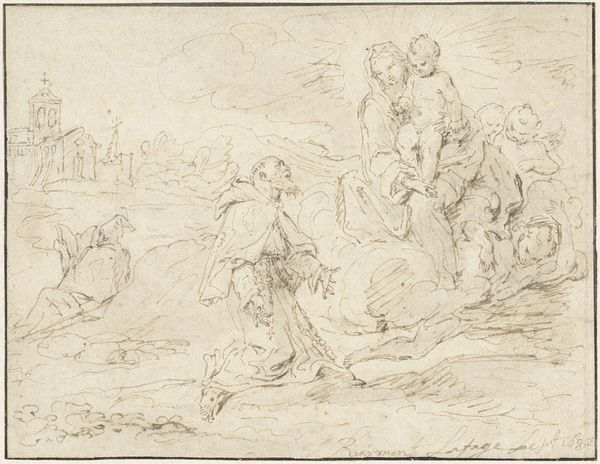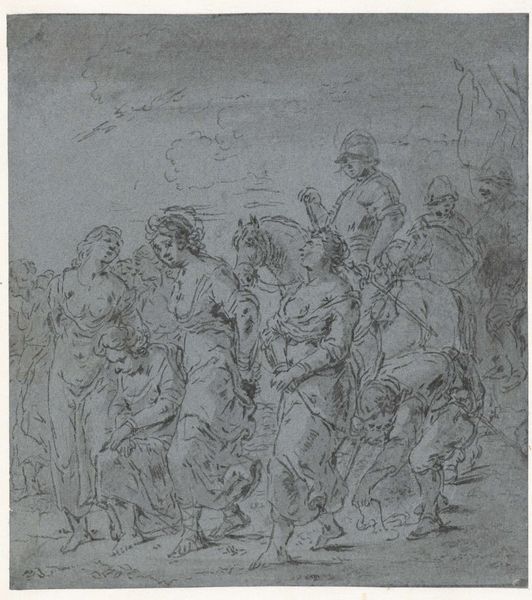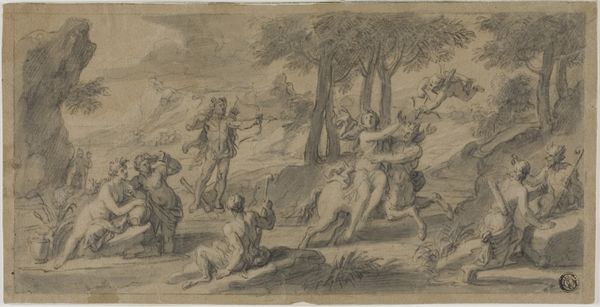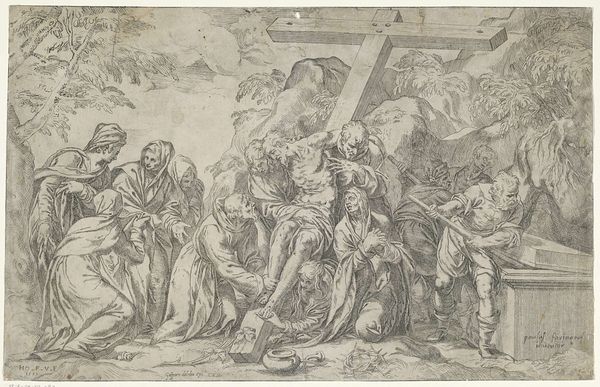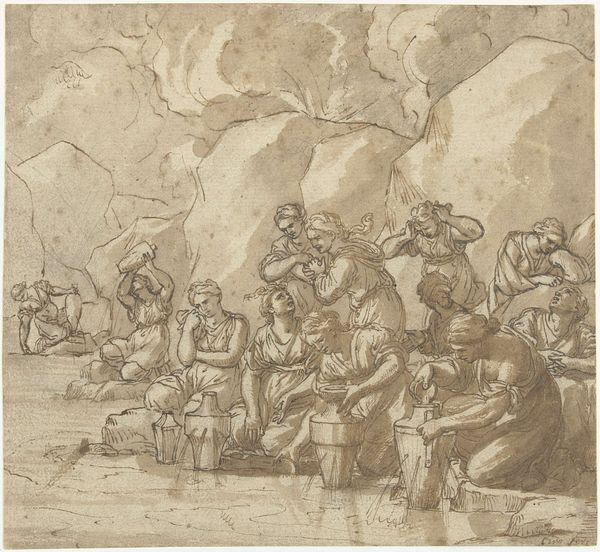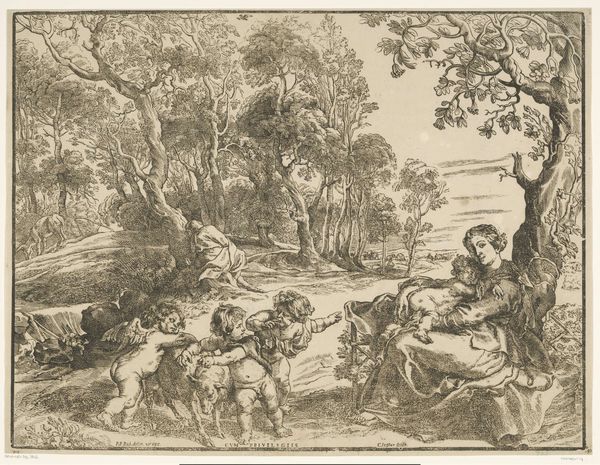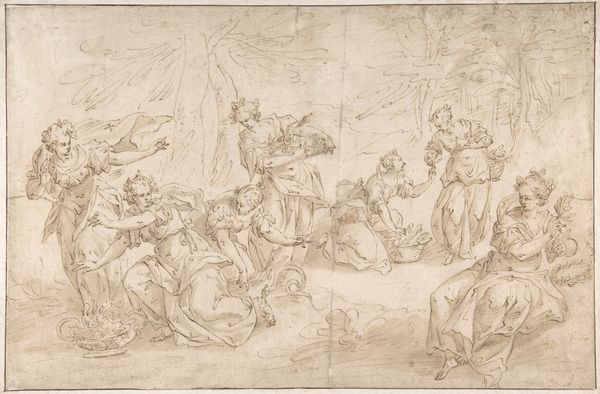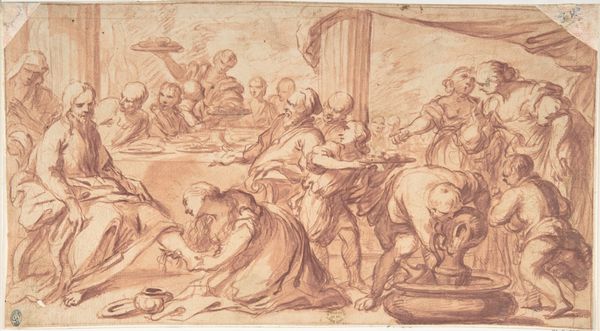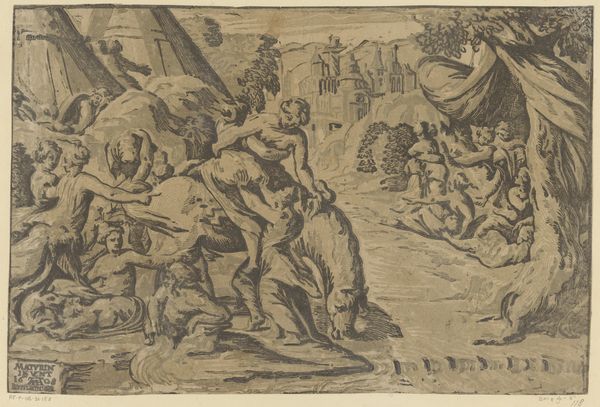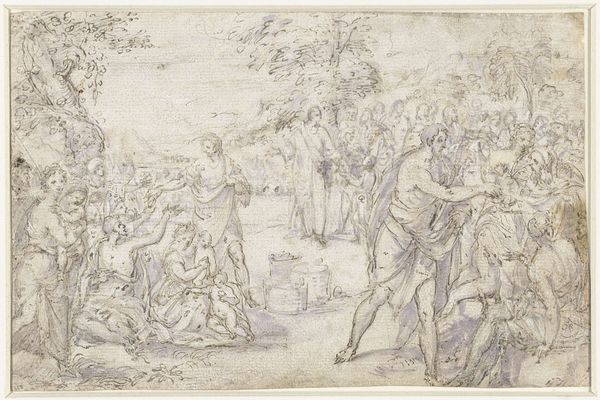
drawing, ink
#
drawing
#
baroque
#
figuration
#
ink
#
history-painting
#
watercolor
Dimensions: sheet: 20.6 × 31 cm (8 1/8 × 12 3/16 in.)
Copyright: National Gallery of Art: CC0 1.0
Curator: This delicate ink drawing is "The Finding of Moses" by Giovanni Battista Gaulli, dating back to about 1685-1690. What strikes you initially about it? Editor: There's a curious energy in the scene. Despite the biblical gravity, it feels...restrained. Almost as if the figures are carefully posed on a stage rather than experiencing raw emotion. Curator: Interesting observation! Gaulli was known for his baroque style, which emphasized dynamism and drama, often in service of the church. Here, the controlled ink strokes suggest a preparatory work. Note how he uses layering to achieve tonal depth. Editor: That tension between the grand narrative of finding Moses—a key figure of liberation—and the artist's materials is really what I’m drawn to. How does the ready availability of ink as a medium influence the work’s ultimate form and message? Was he considering affordability and ease of distribution as key factors? Curator: Certainly. It reflects a specific point in his process and, perhaps, the role drawings played in disseminating his ideas among his workshop and patrons. We must not neglect social hierarchies! How the elite consumes religious themes says much about power dynamics. Editor: Precisely! These images naturalize existing hierarchies. Consider how the women attending the Pharaoh's daughter are portrayed; are they idealized into standard forms or individually drawn to suggest differing ranks? Curator: You raise a critical point about representation. Gaulli's style here tends to harmonize individual features, which may diminish an emphasis on individual identities in favor of collective representation. The very act of finding speaks volumes: reclaiming agency via an infant's life. Editor: Right. The gaze of the women could almost serve as commentary on the gaze of viewers engaging with their rescue narrative, and that relationship to the labor required is fascinating to consider. Curator: Absolutely, viewing the work through a material and societal lens unlocks so much richness. Thank you! Editor: Thanks. A final reflection: let’s think more about what is shown to explore not only its art historical significance but how it still relates and affects social issues in today’s context.
Comments
No comments
Be the first to comment and join the conversation on the ultimate creative platform.
